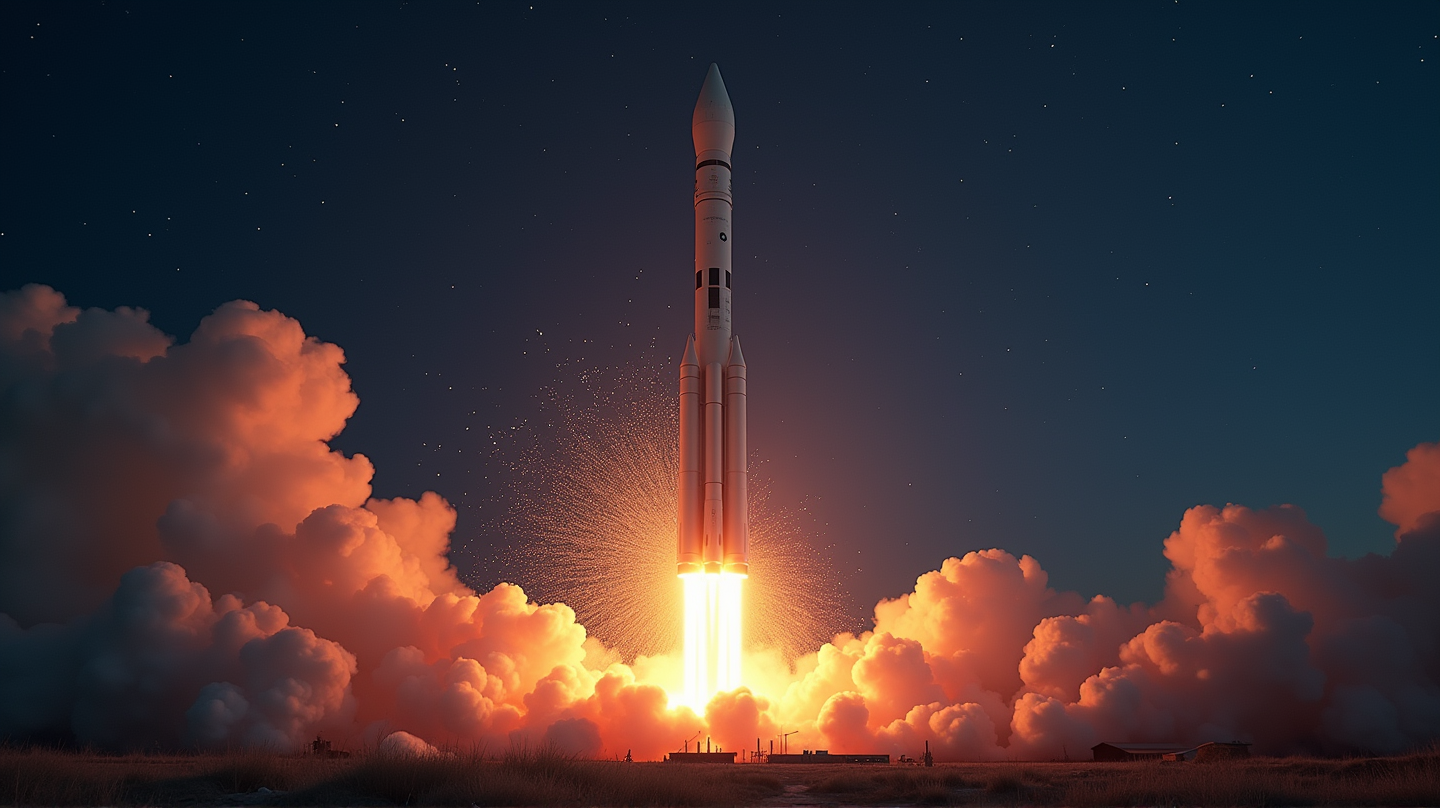Could China's Nine-Engine Rocket Redefine Space Exploration?
China's Zhuque-3 rocket's static fire test marks a turning point, hinting at a possible shift in global space dynamics.

In a groundbreaking ordeal, China’s rocket startup Landspace has thrust itself into the international spotlight with a monumental feat. The successful static fire test of their Zhuque-3 rocket is not merely a technical triumph; it signifies a luminous future for China’s aerospace ambitions and challenges the hegemonic grasp of space by traditional giants like SpaceX.
The Zhuque-3: A Visionary Leap
Imagine the sight: the Zhuque-3 with its nine roaring engines, built to transcend the skies and redefine the realm of possibilities. Equipped with the innovative Tianque-12A engine, utilizing methane and liquid oxygen, this colossus promises cleaner and more cost-effective voyages as humanity delves deeper into space. During its testing at the Dongfeng Commercial Space Innovation Test Zone, the combination of precision and raw power was a spectacle that truly sets the Zhuque-3 apart.
Bridging Past Challenges with Future Innovations
Failures often precede triumph, and the journey of Landspace reflects this truth. In 2018, they faced setbacks, but persistence has paved their path to becoming trailblazers in China’s mission to dominate space exploration with reusability at its core. July 2023 marked the Zhuque-2’s breakthrough, becoming the first methane-liquid oxygen rocket to reach orbit, further solidifying their prowess.
Setting the Stage for Rivals
With plans on the horizon to launch the Zhuque-3 into orbit housing the Haolong cargo spacecraft prototype, excitement abounds. This milestone foreseen for the third quarter promises a paradigm shift, harmonizing with a global pivot towards pioneering sustainability and fiscal prudence in aerospace endeavors. According to Sustainability Times, this marks China’s relentless aspiration towards revolutionizing the space industry.
Static Fire Tests: The Crucible of Success
While static fire tests may evoke trepidation, for innovators, they are quintessential precursors to glory. This critical examination, although fraught with risks as indicated by SpaceX’s illustrious struggles, imposes necessary scrutiny on rocket systems, ensuring alignment and operational exactitude prior to any flight. The flourishing execution of this task by Landspace reiterates a blueprint for celebrated aerospace achievements.
A Global Gazette: Space in China’s Embrace
Named after the mythical Vermillion bird, the Zhuque-3 is emblematic of rebirth and future potential. Embarking on this journey at a towering 217 feet, against the enormity of the cosmos, it accumulates both aspiration and ingenuity, posing a formidable challenge to international competitors while fostering visions of harmony and joint exploration strategies.
Such accomplishments reassert China’s spearheading trajectory in worldwide space aviation, stirring curiosity and ambition as spectators ponder how these reusable technics will evolve space travel - tearing down limitations and unveiling horizons anew.
As Zhuque-3 advances towards its inaugural flight, it embodies more than just human aspirations to explore—it represents a new era of intellectual camaraderie and environmental consciousness in the velvety vastness of space.

